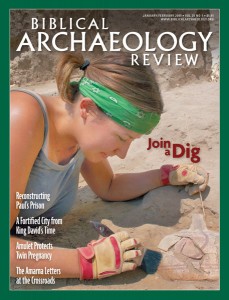
Peter Machinist is the Hancock Professor of Hebrew and Other Oriental Languages in the Department of Near Eastern Languages and Civilizations at Harvard University. With more than 30 years’ experience as a Biblical scholar, Machinist has contributed greatly to our understanding of the historical processes that created the Hebrew Bible. In this excerpt from his recent article “Let a Hundred Flowers Bloom” in The Hebrew Bible: New Insights and Scholarship (New York University Press, 2008), Machinist compares the creation of the Bible to the buildup of layers within an archaeological mound.
The Bible, if you will, may be imagined as something like a tell—the ruined mound of an ancient village, town or city that archaeologists excavate—and its successive layers of human occupation. This means that the differences we can observe in the Bible, whether in law, worship, theological outlook, historical perspective or literary formulation, must be understood as belonging to different strands or stages—different layers—of its history or to different parts of the same layer. These reflect, in turn, the different groups and experiences, scattered over time and, at any one time, over the social spectrum that made up the ancient Israel and Judah from which the Bible emerged.
Already a library member? Log in here.
Institution user? Log in with your IP address.

